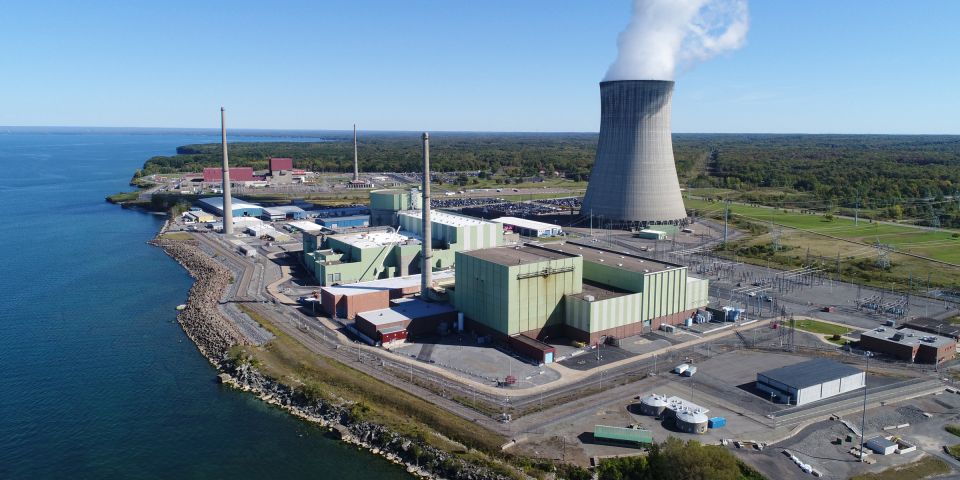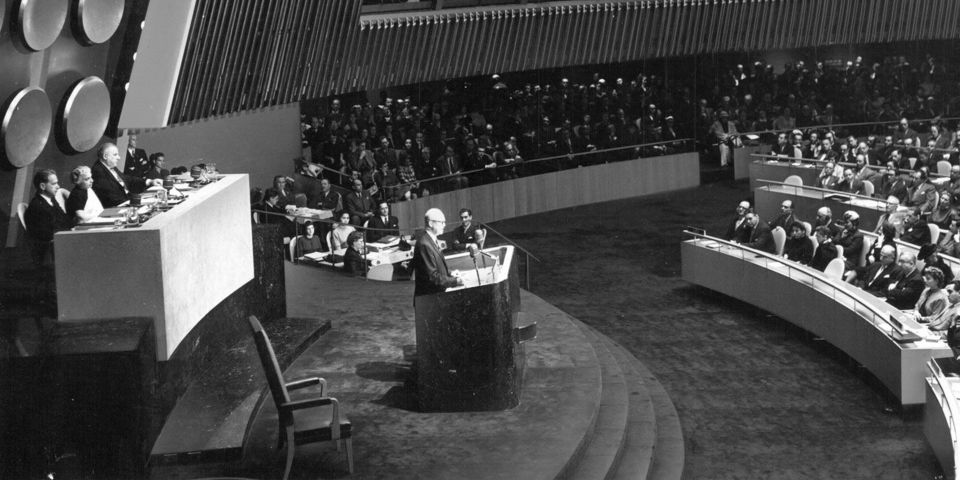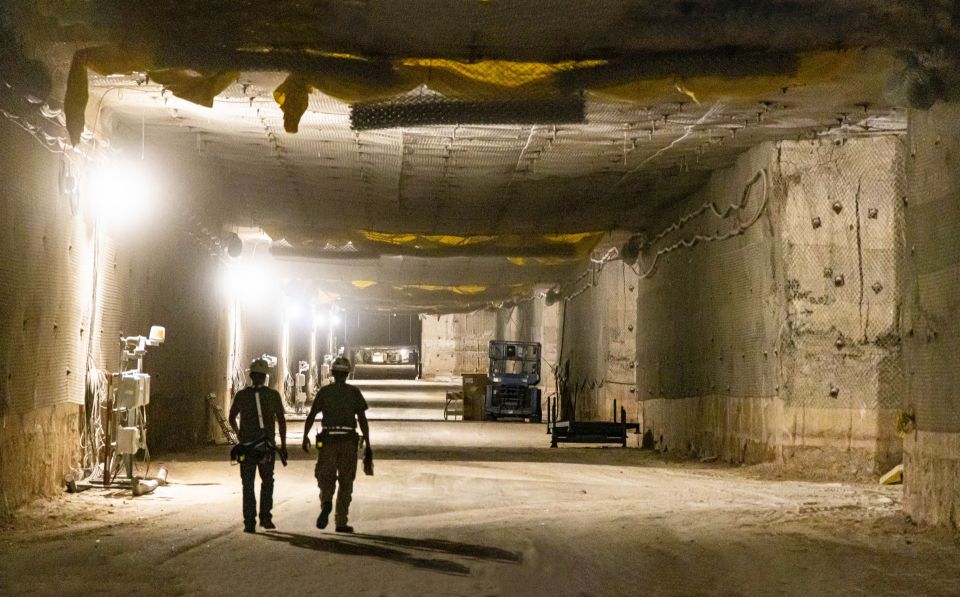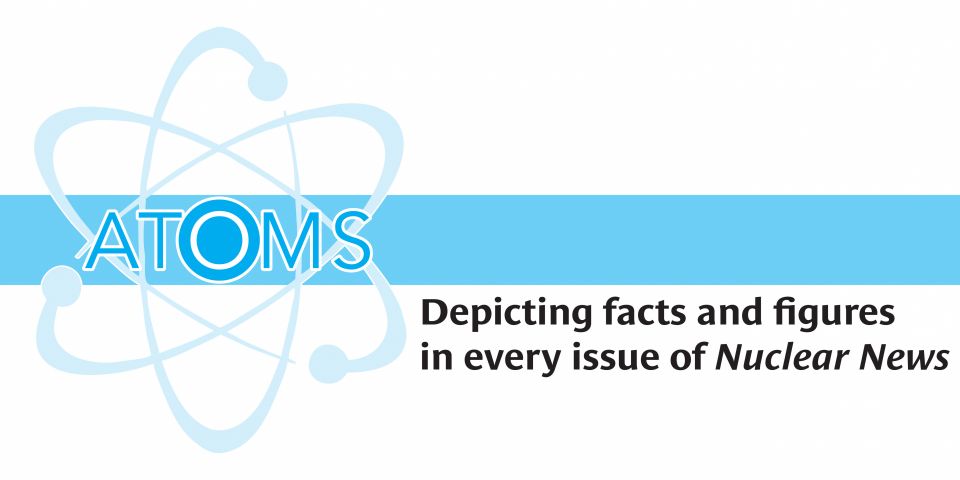Schrödinger’s groundhog
 Happy Groundhog Day! This doesn't actually count as a holiday, but at the very least it is the one day each year that every American can devote to the contemplation of quantum physics. Can there be any bigger fun than that?
Happy Groundhog Day! This doesn't actually count as a holiday, but at the very least it is the one day each year that every American can devote to the contemplation of quantum physics. Can there be any bigger fun than that?
It is well known that Austrian-born physicist Erwin Schrödinger came to Princeton University as a lecturer in 1934. There are few reports, however, of an excursion he took from the campus in New Jersey to the Pennsylvania town of Punxsutawney (which is the Iroquois word for "Place where Chamber-of-Commerce types wear top hats") to witness the ceremony surrounding the emergence of a groundhog from its burrow, the animal's seeing (or not seeing) its shadow (which may or many not have been visible), and the effect of this event on the local weather. Afterward, Schrödinger developed his now-famous thought experiment in which a photon may (or may not) pass through a diffraction grating, illuminating (or leaving in the dark) a groundhog, thus casting (or not) a shadow. (See Fig. 1.)
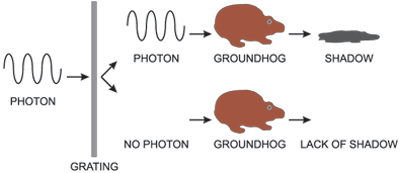
Fig. 1
While the presence or absence of sunlight in Punxsutawney is the key to whether or not a groundhog has a shadow, there are more quantum phenomena related to this event. To ensure that there will be six more weeks of winter, it is not enough that the groundhog be exposed to the kind of light that would cast a shadow; the groundhog must in fact see its shadow. This brings into play another key aspect of quantum theory, the influence of an observer on an event. This will be explored further in a moment.
To this day, there are still skeptics who doubt the underlying premises of this wonderful annual demonstration of quantum principles. Technically, it is true that the northern hemisphere's winter, as defined by the Earth's path around the sun, will indeed continue for six weeks (actually, closer to seven) no matter what happens in Punxsutawney. Further, the means do not exist, at present, to determine whether a groundhog actually sees the shadow; for some reason, researchers have never inserted probes into the creature's brain to detect the action along its optic nerves. This simply means, however, that opportunities abound for new research that would be fruitful, exciting, and (I hope) lucrative.
The role of the groundhog as an influential observer was brought up to Schrödinger after his return to Europe, by German physicist Werner Heisenberg, discoverer of the uncertainty principle. (See Fig. 2.) Leaving aside

Fig. 2
the issue of whether Heisenberg had been assigned by the Nazi regime to spy on the expatriate Schrödinger, Heisenberg's recording of the conversation is one of the great treasures of science history:
WH: It is not enough that the shadow exists, Erwin. It is the seeing that makes the weather. The photon casts the shadow, but the shadow is an absence of photons to enter the eyes.ES: Hmm, yes. And without entering photons, the groundhog believes it is still dark, and thus still winter, and this must somehow influence air masses to keep everything cold.
WH: Would you please say that again into my lapel flower?
ES: No.
WH: They have given you a very tiny office here, Erwin. It is nothing more than a box . . . Look out! That cat has a vial of poison!
The field of groundhog quantum studies remains a challenging but fascinating one. The development of chaos math, a key to the understanding of weather, has not yet reached the point of covering groundhog influence. It has been suggested by some theorists (well, one theorist) (well, myself) that the processing of images by a groundhog's eyes leads to the emission of antineutrinos, altering the balance of this particle's presence in the atmosphere (generally dominated by solar neutrino emission) and affecting the energy content of jet streams. Antineutrino emission during radioactive decay may incite some field-related phenomena that govern the half-life of radioactive material, but has anyone yet measured the decay of radioisotopes in the presence of a shadow-observing groundhog? I think not.
There has also never been a complete explanation of the groundhog's multiplicity of states. It is well established that a groundhog can be a woodchuck, and vice versa, and while there has been considerable curiosity about the quantity of wood that can be chucked by a woodchuck, not one peer-reviewed paper has ever been published on how much ground a groundhog could hog. Further, a neutrino can exist in three states, and transform from one to another. This strongly suggests the existence of a third state of groundhog/woodchuck, but its discovery must be left as an exercise for the reader. (See Fig. 3.)
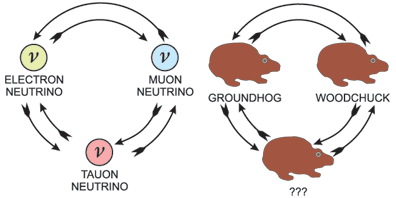
Fig. 3
Today, as we stay indoors and watch delayed videos of windburned people in Pennsylvania holding up a groundhog at the crack of dawn, let us resolve to continue our pursuit of knowledge by campaigning for substantial support of groundhog quantum studies. The fiscal year 2012 federal budget will be proposed in a few days. I'm sure that the Department of Energy will see the merits of my 19 grant proposals.
 A. Priori might be a variant state of E. Michael Blake, a senior editor of Nuclear News, the news magazine of the American Nuclear Society-but this has never been confirmed experimentally. Given the uncertainties of the quantum realm, the views expressed here may not be anyone's.
A. Priori might be a variant state of E. Michael Blake, a senior editor of Nuclear News, the news magazine of the American Nuclear Society-but this has never been confirmed experimentally. Given the uncertainties of the quantum realm, the views expressed here may not be anyone's.


